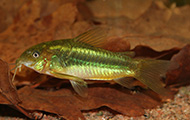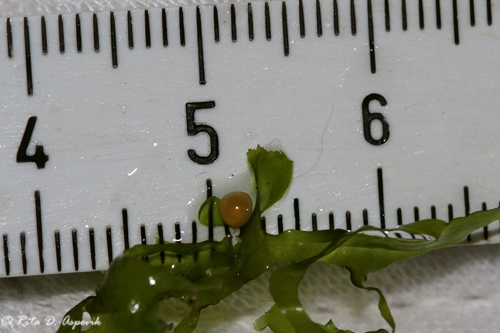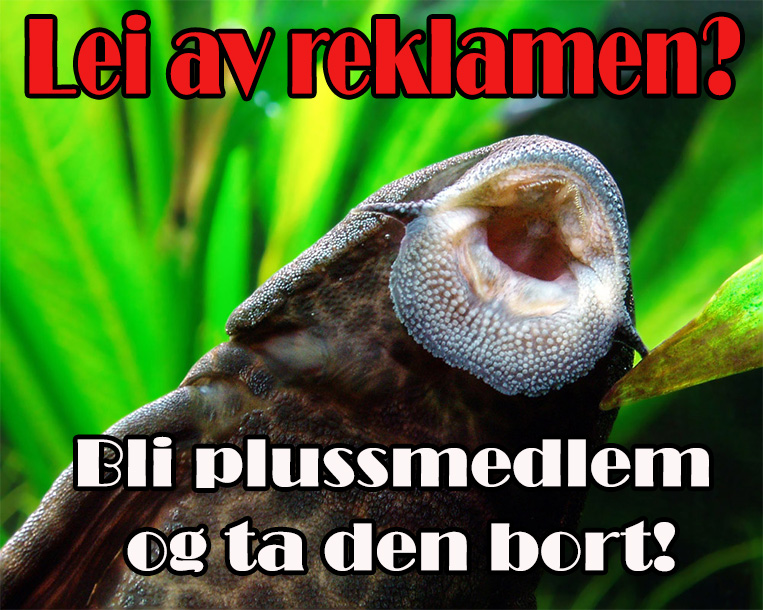- Hjem
- Forum
- Nybegynner
- Flag ciklide hjelp takk:)
Flag ciklide hjelp takk:)
hei jeg har 2 lekepar med VF flag ciklider fra peru.
og dem har 1 kar for deg sjøl begge kara er got beplanta å nå ser det ut til å være små leking i det ene kare, men dem er så rede og blir ikke lekk.Har venta 2-3 månder men ingen ting sher.
noen tips til hvodan jeg kan få dem til å leke?
fikk et tips om å hive oppi et palet ciklider par det virket på en måte dem er frame og sont men dem er så blasne i fargen.
det ene pare har fot fin farve men ikke no mer.
noen tips til hvodan jeg kan få dem til å leke?
og det andre pare til å trives sjikeligt?
Hva jør jeg feil. den forje eieren fikk mye yngel, og han som kjupte resten har huvervis av yngel!!! men ikke jeg
og dem har 1 kar for deg sjøl begge kara er got beplanta å nå ser det ut til å være små leking i det ene kare, men dem er så rede og blir ikke lekk.Har venta 2-3 månder men ingen ting sher.
noen tips til hvodan jeg kan få dem til å leke?
fikk et tips om å hive oppi et palet ciklider par det virket på en måte dem er frame og sont men dem er så blasne i fargen.
det ene pare har fot fin farve men ikke no mer.
noen tips til hvodan jeg kan få dem til å leke?
og det andre pare til å trives sjikeligt?
Hva jør jeg feil. den forje eieren fikk mye yngel, og han som kjupte resten har huvervis av yngel!!! men ikke jeg
Postet 26.06.10 kl 12:26
Endret: 26.06.10 kl 12:27
Inaktiv bruker

Hei!
En ting jeg gjør hver eneste gang jeg skal drette en fisk, er som følger:
Gå inn på google. I søkefeltet skriver du [det latinske navnet på arten] + breeding.
Som i ditt tilfelle blir; [URL=http://www.google.no/search?hl=no&source=hp&q=Mesonauta+festivus+breeding&aq=f&aqi=&aql=&oq=&gs_rfai=]Mesonauta festivus Breeding..[/URL]
Da får man opp mange gode tips og erfaringer, så da er det bare å sette seg ned å lese!
Noen sider jeg fant i farta... ;D
Mesonauta
festivus
breeding
Erik
En ting jeg gjør hver eneste gang jeg skal drette en fisk, er som følger:
Gå inn på google. I søkefeltet skriver du [det latinske navnet på arten] + breeding.
Som i ditt tilfelle blir; [URL=http://www.google.no/search?hl=no&source=hp&q=Mesonauta+festivus+breeding&aq=f&aqi=&aql=&oq=&gs_rfai=]Mesonauta festivus Breeding..[/URL]
Da får man opp mange gode tips og erfaringer, så da er det bare å sette seg ned å lese!
Noen sider jeg fant i farta... ;D
Mesonauta
festivus
breeding
Erik
Postet 26.06.10 kl 22:35
Endret: 26.06.10 kl 22:39
Postet 27.06.10 kl 02:13
Postet 27.06.10 kl 10:43
Inaktiv bruker

Lest dette...?
" The Flag Cichlids are egg layers and they form a nuclear family. They are somewhat more difficult than other cichlids to breed in captivity. Using a solid surface to spawn on is helpful. In the wild, some species will find submersed sugarcane stems to lay their eggs. A similar looking structure should help to breed them in your aquarium. They like fake or real plant leaves or a solid object like a rock or clay pot piece. The female will use these structures to hold the approximately 100 eggs near the surface (between 200 to 500 eggs have been observed in the wild).
When the fry hatch, they are hung on the structure near the top with gland secretions. Both the parents guard the young. In 5 more days the fry are free swimming and the parents then use their peduncle ocellus to signal the fry to keep them oriented in the water. The parents will use water plants to hide their fry if threatened by predators.
In the aquarium they are particularly hard to breed. Eggs will be laid, but convincing the parents to care for the eggs is another issue. Having non-aggressive tank mates will help. A species specific tank with a few dither fish that are not much larger or meaner, and are smart enough to stay away from the parents and young, would be ideal. Some say dither fish encourage the parents to care for the young. Feed the babies newly hatched brine shrimp for the first week or two. Juveniles love fruit flies according to one aquarist."
Erik
" The Flag Cichlids are egg layers and they form a nuclear family. They are somewhat more difficult than other cichlids to breed in captivity. Using a solid surface to spawn on is helpful. In the wild, some species will find submersed sugarcane stems to lay their eggs. A similar looking structure should help to breed them in your aquarium. They like fake or real plant leaves or a solid object like a rock or clay pot piece. The female will use these structures to hold the approximately 100 eggs near the surface (between 200 to 500 eggs have been observed in the wild).
When the fry hatch, they are hung on the structure near the top with gland secretions. Both the parents guard the young. In 5 more days the fry are free swimming and the parents then use their peduncle ocellus to signal the fry to keep them oriented in the water. The parents will use water plants to hide their fry if threatened by predators.
In the aquarium they are particularly hard to breed. Eggs will be laid, but convincing the parents to care for the eggs is another issue. Having non-aggressive tank mates will help. A species specific tank with a few dither fish that are not much larger or meaner, and are smart enough to stay away from the parents and young, would be ideal. Some say dither fish encourage the parents to care for the young. Feed the babies newly hatched brine shrimp for the first week or two. Juveniles love fruit flies according to one aquarist."
Erik
Postet 27.06.10 kl 11:57
Postet 27.06.10 kl 12:02
Inaktiv bruker

Erik SilgjerdLest dette...? " The Flag Cichlids are egg layers and they form a nuclear family. They are somewhat more difficult than other cichlids to breed in captivity. [B]Using a solid surface to spawn on is helpful. In the wild, some species will find submersed sugarcane stems to lay their eggs. A similar looking structure should help to breed them in your aquarium. They like fake or real plant leaves or a solid object like a rock or clay pot piece.[/B] The female will use these structures to hold the approximately 100 eggs near the surface (between 200 to 500 eggs have been observed in the wild). When the fry hatch, they are hung on the structure near the top with gland secretions. Both the parents guard the young. In 5 more days the fry are free swimming and the parents then use their peduncle ocellus to signal the fry to keep them oriented in the water. The parents will use water plants to hide their fry if threatened by predators. In the aquarium they are particularly hard to breed. Eggs will be laid, but convincing the parents to care for the eggs is another issue. [B]Having non-aggressive tank mates will help.[/B] [B]A species specific tank with a few dither fish that are not much larger or meaner, and are smart enough to stay away from the parents and young, would be ideal.[/B] Some say dither fish encourage the parents to care for the young. Feed the babies newly hatched brine shrimp for the first week or two. Juveniles love fruit flies according to one aquarist." Erik
Postet 27.06.10 kl 12:06



